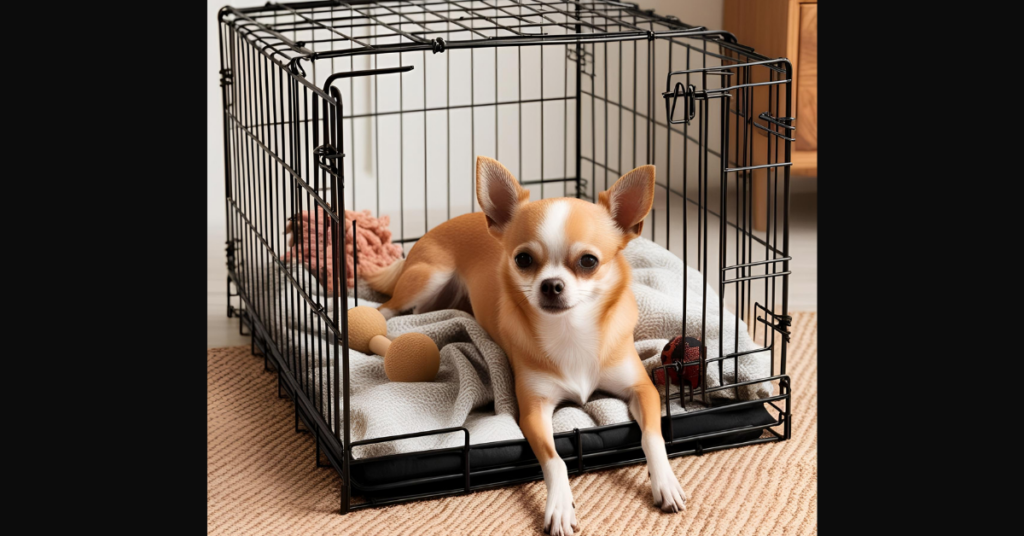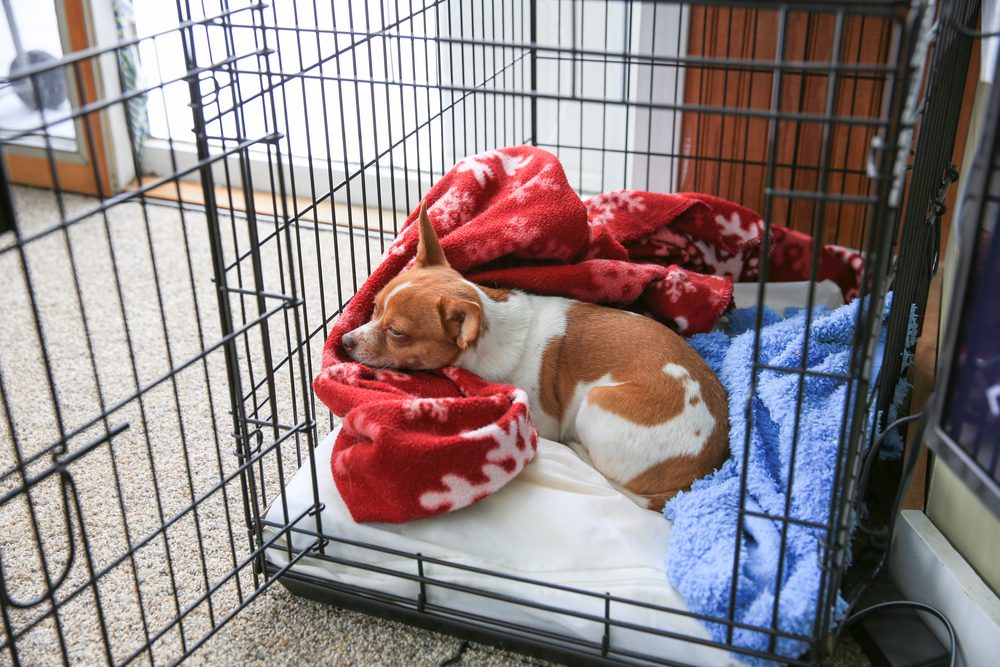AUTHOR'S NOTE:
This post was first written in 2016 and had some outdated information. It has been completely re-researched and re-written to reflect the latest information.
The Biggest Crate Training Mistake: Using the Crate as Punishment
One of the most common mistakes people make when crate training is using the crate as a form of punishment. If your Chihuahua associates the crate with negative experiences it can create anxiety and resistance toward crate time. Instead of being a cozy den, the crate becomes a place of isolation and fear. Never lock your Chihuahua in a crate because he or she misbehaved, or because they had an accident in the house.
Dogs, especially small breeds like Chihuahuas, thrive on positive reinforcement. If they associate the crate with punishment, they’ll resist going inside, whine excessively, or even develop separation anxiety. This not only makes crate training difficult but can lead to behavioral issues down the line.
What to Do Instead: Make the Crate a Positive, Safe Space
Instead of using the crate as a consequence for bad behavior, follow these steps to make sure that your Chihuahua sees the crate as a happy, inviting, and safe place.
1. Choose the right crate
Not all crates are right for a Chihuahua. It should be just the right size for your Chihuahua to stand up, turn around, and lie down comfortably.
If it is too big they might use one corner as a bathroom. Too small and they’ll feel cramped. If you’re looking for a well-sized and comfortable option, check out this highly-rated small dog crate.
For small dogs I prefer a crate that opens in the front and on top. It is easier to put in and take out bedding and to lift out your Chihuahua from the top than having to crouch to do those things from the front. Like the one that I use.
2. Introduce the crate gradually
Don’t try to force your Chi inside, let them explore it on their own at their own pace. Just leave the door open and place treats or a favorite toy inside. Dogs are curious and he or she will soon go check it out.
A comfy crate mat or bed can also make it more inviting—this plush crate bed is a great option for extra coziness.

3. Use Positive Reinforcement
Whenever your Chi willingly goes into the crate, reward them with treats, praise, or even a chew toy. Over time, they’ll begin associating the crate with good things. For extra encouragement, you can try a crate training aid like this calming spray to help ease anxiety.
4. Make Crate Time Enjoyable
Instead of only using the crate when you leave the house, encourage your Chihuahua to nap inside during the day. Give them meals in their crate or offer a special chew toy that they only get while crated. This builds a positive association and prevents them from feeling trapped.
5. Avoid Long Periods of Crating
Crates should never be used for extended confinement. Young puppies can typically only hold their bladder for a few hours, and adult dogs shouldn’t be crated for more than 4-6 hours at a time. If you need a safe space while you’re away, consider using a larger playpen instead—this adjustable pet pen is a great alternative.
final thoughts
Crate training should be a stress-free, positive experience for your Chihuahua. By avoiding the mistake of using it as punishment and instead creating a welcoming environment, your pup will learn to love their crate as a cozy retreat.
If you’re looking for the best crate for your small dog, be sure to check out our recommended options here. With the right approach, crate training can be an enjoyable and rewarding process for both you and your furry friend!
